How Your Brand Can Introduce Social Commerce Today
In the past, businesses only treated social media as a simple tool for building awareness and promoting their products. To convert your social audience into paying customers, you had to move them away from the social platform to your online store. However, with consumers increasingly immersed in social platforms, a new social media trend has emerged as a game-changer for businesses looking for more meaningful ways to engage their customers. I am talking about social commerce.
Social commerce combines social media and e-commerce, allowing businesses to seamlessly integrate their products and services into their customers' social experiences. Instead of moving consumers away from social platforms, social commerce will enable customers to buy directly through social media. This is made possible by embedded buy buttons and shoppable posts, allowing the brands to provide a frictionless shopping experience.
With billions of consumers actively using social platforms like Facebook, Twitter, TikTok, Instagram, and Pinterest, social commerce is increasingly becoming influential in digital retail. In this article, we will look at the benefits of social commerce and explore the different ways your brand can harness its power to create deeper connections with customers, amplify brand visibility, and drive revenue.
Table of Contents
Benefits of Social Commerce
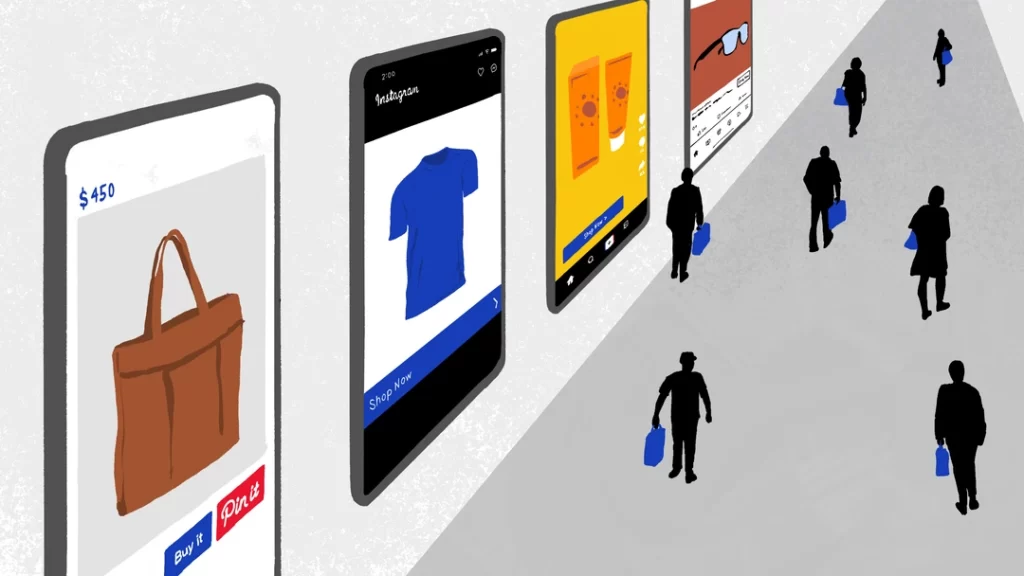
Embracing social commerce offers several benefits for brands. Some of these include:
Impulse Purchases
One of the benefits of social commerce is that it takes advantage of the real-time and immersive nature of social media, making it conducive to impulse purchases. Users can efficiently complete the purchase without leaving the social platform When they scroll through their social feeds and come across enticing products. This ability to make quick and convenient purchases increases the likelihood of impulse buying, which is a tremendous advantage to brands.
Social Proof and User-Generated Content
When a customer makes a purchase directly on your e-commerce store, they are not very likely to share details of the purchase with their friends and followers. However, when they purchase social media, the likelihood of them sharing their experiences, reviews, and product photos directly within the same social platform increases significantly.
This user-generated content about your brand and products acts as social proof – it helps build trust in your brand and influences purchase decisions. It makes other consumers more confident in your brand and boosts the chances of conversions.
Social Discovery
One of the best things about social media is that it allows users to explore and discover new brands or products even when they are not actively looking for them. At the same time, having a buy button directly on the social platform allows the consumer to purchase the product immediately before they forget about it. This helps enhance brand discovery and can drive organic reach and customer acquisition.
Influencer Recommendations
Another great benefit of social commerce is that it allows brands to collaborate with influencers. If you partner with the right influencers, they can drive product awareness, generate buzz around your brand, and significantly boost your sales.

Social Sharing and Virality
Social media platforms thrive on sharing, which can sometimes lead to virality. Social commerce encourages consumers to share their purchases, experiences, and product recommendations with their followers. Sometimes, this sharing can result in a product going viral, creating a ripple effect that pushes more and more consumers to check out and purchase the product due to the fear of missing out (FOMO). When a product goes viral, it amplifies brand exposure and helps you reach a broader audience.
Seamless Mobile Experience
Social commerce is particularly advantageous for mobile users. Therefore, embracing social commerce provides a seamless shopping experience optimised for the devices your target audience already uses regularly. Instead of pushing consumers to external websites, which might need to be better optimised for mobile, customers can browse and purchase products without leaving the social app. This ultimately increases the likelihood of conversions.
Increased Reach and Exposure
Social platforms have enormous user bases. For instance, Facebook has 2.04 active daily users, while Instagram has 1.3 billion active daily users. By selling directly on social platforms, you open up your products to a significantly wider audience than you'd reach, selling only on your website.
Data Insights and Analytics
The beauty of social media is that it gives you lots of valuable analytics and insights into your audience's behaviour, preferences, and trends. Brands can use this data to target social media users with products based on their demographics, behaviours, interests, and preferences, thus maximising the chances of conversion.
You can also use this data to make better business decisions, refine your marketing strategies, and optimise product offerings outside social media. For instance, if you sell on other platforms like Amazon, you can share customer insights gained from social commerce with your Amazon PPC agency to help them optimise your Amazon campaign performance, keywords, and audience targeting.
Utilising Social Commerce on Different Social Media Platforms
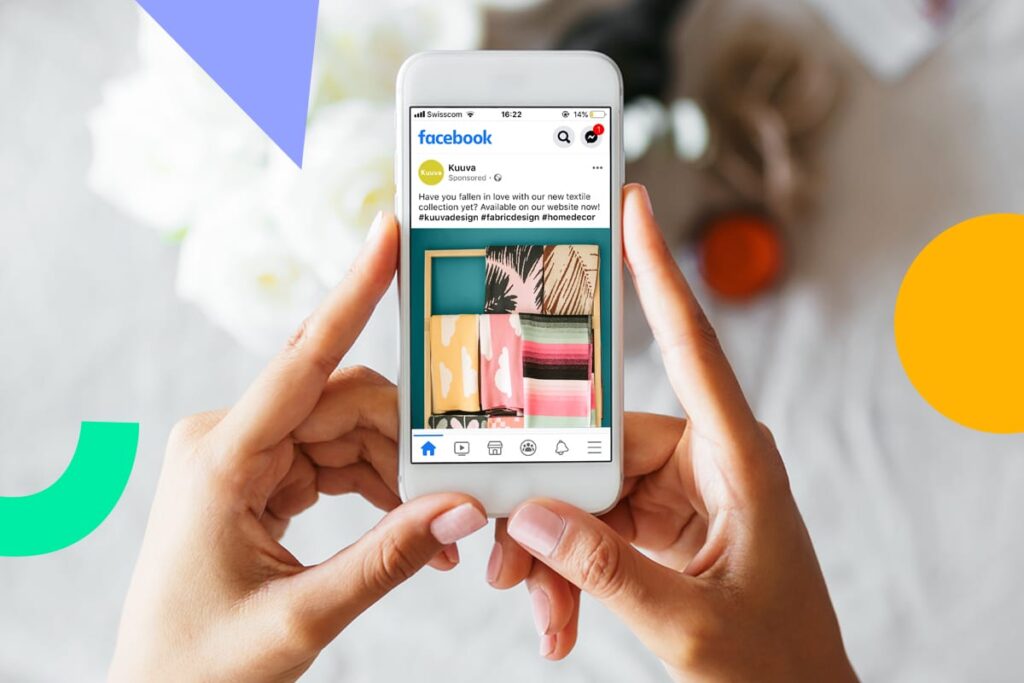
Now that you understand the benefits of adopting social commerce, let's look at how you can utilise social marketing on different social platforms and create positive experiential shopping opportunities for your customers.
Facebook is the world's most popular social media platform, with billions of active users. With such a vast user base, it offers tremendous opportunities for businesses to tap into social commerce. Its impressive features make it an ideal platform for connecting with customers, promoting products, and driving sales.
Below are three things you can do to leverage the power of Facebook for social commerce.
Create a Facebook Shop
One of the best Facebook features for social commerce is the ability to create a Facebook Shop. This feature lets you set up a Shop section to showcase your products and services directly on your Facebook page. You can create a visually appealing catalogue, organise products into categories, and provide detailed descriptions, prices, and images.
People visiting your page can easily browse your product offerings, add items to their carts, and complete purchases on your page. This streamlined experience makes shopping convenient for your customers and increases the likelihood of conversions.
Leverage Facebook Live for Product Demonstrations
This feature lets you broadcast live video content on your Facebook page and interact with your audience in real-time. Facebook Live is an excellent way for brands to showcase products, hold product demonstrations, and provide in-depth insights about their products and services.
Additionally, the interactive nature of Facebook Live means you can actively engage your viewers, address their concerns, and build trust. Customers no longer look at edited product images and videos, which can be manipulated. Instead, they can see the product in action in real-time. This is a great way to build customer confidence in your products.
Use Facebook Groups for Exclusive Offers and Engagement
Facebook created groups to unite like-minded individuals and provide spaces for them to share interests and engage in meaningful discussions. As a brand, you can harness the power of Facebook groups for social commerce by creating groups to bring together your customers or people interested in your niche.
Since every member is an existing or potential customer, you can use these groups to offer special promotions, discounts, and exclusive content to foster a sense of exclusivity and community. The groups also provide an excellent opportunity for your brand to build strong relationships with its audience, gather valuable feedback, and gain insights into customer preferences.
Facebook groups also act as communities for your customers to interact with each other, share their experiences with your brand and products, and serve as brand advocates. This can further amplify your reach and build brand loyalty.
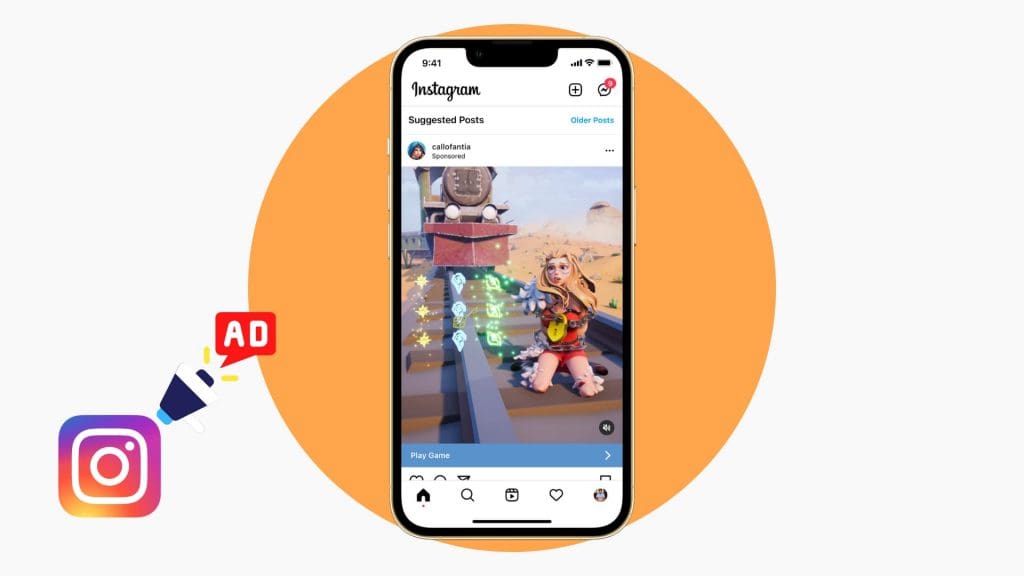
Instagram has rapidly evolved from its photo-sharing beginnings to a thriving hub for social commerce. Instagram is a perfect brand marketing platform due to its visually focused nature and large user base. It allows brands to showcase their products, engage with customers, and drive sales. Below, let's look at some things you can do to make Instagram a crucial part of your social commerce strategy.
Set Up an Instagram Shop
Like Facebook, Instagram lets you set up a shop on your profile. Once you integrate your product catalogue with your Instagram shop, people can browse through your products, view product details, and purchase products directly on the Instagram app.
Take Advantage of Shoppable Posts and Tags
Shoppable posts and tags are unique Instagram features that allow you to tag products in your products and stories. For instance, if you post a model wearing one of your products, say a dress, you can add a tag to the dress. When someone viewing the post taps on the tag, they are taken to a page where they can view more details about the dress and make a purchase.
Strategically incorporating shoppable tags in your Instagram posts allows you to seamlessly guide potential customers from getting inspired by your posts to purchasing the products in the posts with minimal effort. It leverages the visual appeal of your posts to drive sales.
Collaborate With Influencers for Product Promotions
Influencer marketing plays a significant role in social commerce on Instagram. Many macro and micro-influencers have loyal and engaged followers, and their recommendations substantially impact their audience's buying decisions.
By reaching out to and partnering with influencers in your niche, you can tap into their audience and leverage their credibility to drive product sales. You can have the influencers showcase your products in their posts or do dedicated and authentic reviews about your products. Done well, influencer marketing on Instagram can help you boost brand awareness, trust, and sales.

Twitter is better known for its fast-paced environment, quick wits, and real-time nature than it's known for social commerce. Still, Twitter offers fantastic marketing opportunities for businesses. Thanks to its vast user base and features like cards and polls, brands can leverage the platform to promote products, engage with customers, and drive sales. Here are a few ways to take advantage of Twitter for social commerce:
Use Twitter Cards to Showcase Products
Twitter cards are a feature that makes your tweets more engaging and informative by allowing you to attach rich media, such as videos, photos, audio, and other information, to tweets. Brands can leverage Twitter cards to add product photos, product descriptions, pricing, and call-to-action buttons to tweets. You can also use Twitter cards to link to your online store, allowing users to explore your product catalogue and make purchases without leaving Twitter.
Leverage Twitter Polls for Market Research
Twitter polls provide a unique opportunity for brands to engage with their audience and gather valuable insights without investing in costly market research. Running polls also allows you to directly involve your customers in the decision-making process, which is a great way to build deeper connections, foster a sense of involvement, and enhance brand loyalty.
Using Twitter polls for market research can be simple. You can ask questions about new product ideas, features, and general customer preferences. Your followers' answers to these questions can give you valuable insights into what your customers want from your brand.
Promote Limited-Time Offers through Twitter
The fast-paced nature of Twitter makes it the perfect social platform for promoting flash sales and other limited-time offers. By creating a sense of urgency and exclusivity, brands can quickly get their followers to act immediately and increase conversions.
All you need to do here is to use well-crafted tweets to announce limited-time discounts, promotions, or special offers and create a buzz among your followers. Use clear calls-to-action, countdowns, and limited stock notifications to encourage your audience to act swiftly and purchase before the offers expire. You can also use relevant hashtags and retweets to increase exposure and amplify your offers' reach beyond your following.
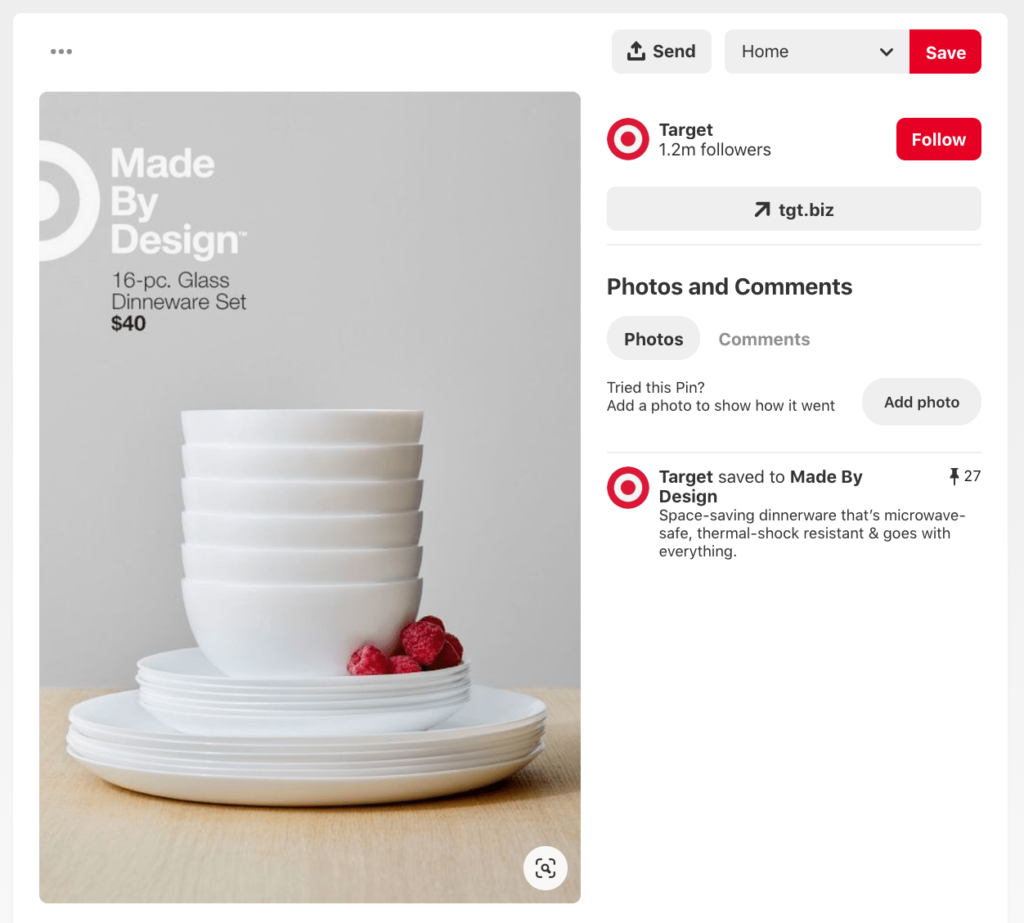
Pinterest is a unique social media platform around visual discovery and inspiration. It offers businesses a powerful avenue for social commerce, allowing them to showcase products, engage with users, and drive sales through captivating visual content. So, how can brands use Pinterest for social marketing?
Create Buyable Pins
Pinterest allows users to create buyable pins that include product details, pricing, and a direct link to purchase the item. Adding buyable pins to your boards lets your followers discover products they love and make seamless purchases without leaving Pinterest. This makes the shopping experience frictionless and convenient for your customers and encourages impulse purchases.
Use Visual Storytelling to Engage Users
Pinterest's visual focus makes it an ideal platform for building a solid brand presence and engaging users with visual storytelling. Using visually beautiful pins, your brand can capture attention, tell a story, evoke emotions, and inspire your audience. You can also curate boards that align with your brand's identity and values to showcase your products in a way that resonates with your target audience. Done consistently, this can be a great way to drive your target audience towards buying, which they can easily do with buyable pins.
Collaborate With Influencers to Amplify Reach
Pinterest is another social platform that lends itself well to influencer marketing. Partnering with Pinterest with influencers who have a substantial following and align with your brand can help amplify your brand's reach and product exposure.
You can have the influencers create dedicated boards, curate pins featuring your products, and provide authentic endorsements. Their influence and engaged audience can significantly boost brand awareness, drive traffic to your boards, and increase conversions.
TikTok
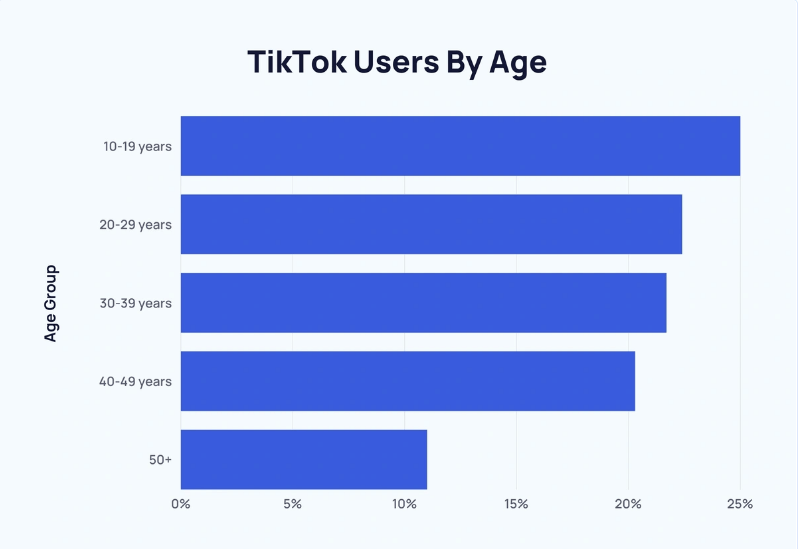
Launched just seven years ago, TikTok is one of the youngest social platforms, yet it has taken the social media world by storm with its unique blend of short-form videos and creative content. The latest data shows that social media users spend more time on TikTok than on other social platforms. With such popularity, it is no wonder that the platform has emerged as a good space for social commerce, enabling businesses to reach a diverse and engaged audience through innovative and entertaining videos. Here are some of the ways you can leverage TikTok for social interaction:
Leverage TikTok's Shoppable Ads and Links
Like most social platforms, TikTok allows businesses to incorporate shoppable ads and links into their videos. By using TikTok's native ad formats, brands can seamlessly showcase products or services within engaging video content. The call-to-action buttons in the video ads direct users to external websites to explore and purchase products directly. Integrating shoppable elements within TikTok's immersive video experience enhances convenience and drives conversions.
Create Engaging and Entertaining Product Videos
One of the things that has made TikTok so popular is its emphasis on creativity and entertainment. You can leverage this as a brand by creating engaging and entertaining product videos that capture users' attention and evoke interest.
Showcasing your products in unique and visually appealing ways allows you to generate excitement and curiosity among your target audience. Additionally, by using catchy music, visual effects, and relatable narratives, you can enhance the overall impact of your videos and increase the likelihood of users engaging with your content and making purchases.
Encourage User-Generated Content and Challenges
TikTok thrives on user-generated content and challenges. This provides brands with an excellent opportunity to engage with their audience and foster a sense of community. The best way to do this is to create branded challenges related to your industry or products and encourage your followers to join in the challenge by making their content using your products.
Such challenges kill two birds with one stone – they promote your brand while generating organic reach and authenticity at the same time. You can even take it further by collaborating with TikTok creators and influencers to participate in these challenges, further amplifying your reach and impact.
Strategies for Successful Social Commerce Implementation

Below are some strategies and best practices to increase your chances of success when introducing social commerce to your brand.
Define Your Target Audience and Choose the Right Platforms
Before you start adopting social commerce, the first thing you need to do is to define your target audience. Who are they? What are their demographics? What are their behaviours, interests, and preferences?
Knowing this information beforehand will help you choose the right social platform where your audience is most active. Remember, each social platform has unique characteristics and user base, so choosing the right ones will maximise your reach and engagement potential.
Develop a Cohesive Brand Presence Across Social Media
Most brands have an online presence on two or more social platforms. For your social commerce efforts to be practical, developing cohesive branding across all your social media platforms is vital to maintaining a unified image and voice. This includes consistent branding elements such as logos, colours, and fonts. Align your messaging, tone, and values across different platforms to build a strong brand identity that resonates with your target audience.
Create Compelling and Visually Appealing Content
In social commerce, attention-grabbing and visually appealing content is essential. Invest in high-quality images, videos, and graphics that showcase your products or services in the best possible light. Craft compelling and concise captions highlighting your offerings' unique value proposition and benefits. Doing this lets you capture users' attention, generate interest, and drive them to act.
Incorporate Social Proof and Customer Testimonials
Social proof plays a significant role in influencing purchase decisions, especially on social media. Therefore, it's crucial to incorporate social proof elements such as customer testimonials, reviews, and ratings into your social commerce strategy.
Encourage satisfied customers to share their positive experiences and showcase them on your social media platforms. User-generated content, such as customer photos or videos featuring your products, can be powerful social proof. It builds trust, credibility, and confidence among potential customers, increasing the likelihood of conversions.
Monitor and Analyse Metrics to Refine Your Approach
Regularly monitor and analyse key metrics to gain insights into the effectiveness of your social commerce efforts—track metrics such as engagement, click-through, conversion rates, and sales generated from social media platforms. Use analytics tools provided by the platforms themselves or third-party tools to assess the performance of your campaigns. Based on the data, you can refine your approach, make data-driven decisions, and optimise your social commerce strategy for better results.
Wrapping Up
The rise of social media platforms as shopping destinations has opened up new avenues for businesses to engage with their customers, showcase their products or services, and drive sales. By adapting to this evolving landscape and integrating social commerce strategies into your marketing efforts, your brand can stay ahead of the competition and connect with customers more meaningfully and positively.
Therefore, whether you're a small startup or an established brand, it's essential to seize the opportunities presented by social commerce. Define your target audience, choose the right platforms, develop a cohesive brand presence, create compelling content, incorporate social proof, and continuously monitor and analyse metrics to refine your approach.
